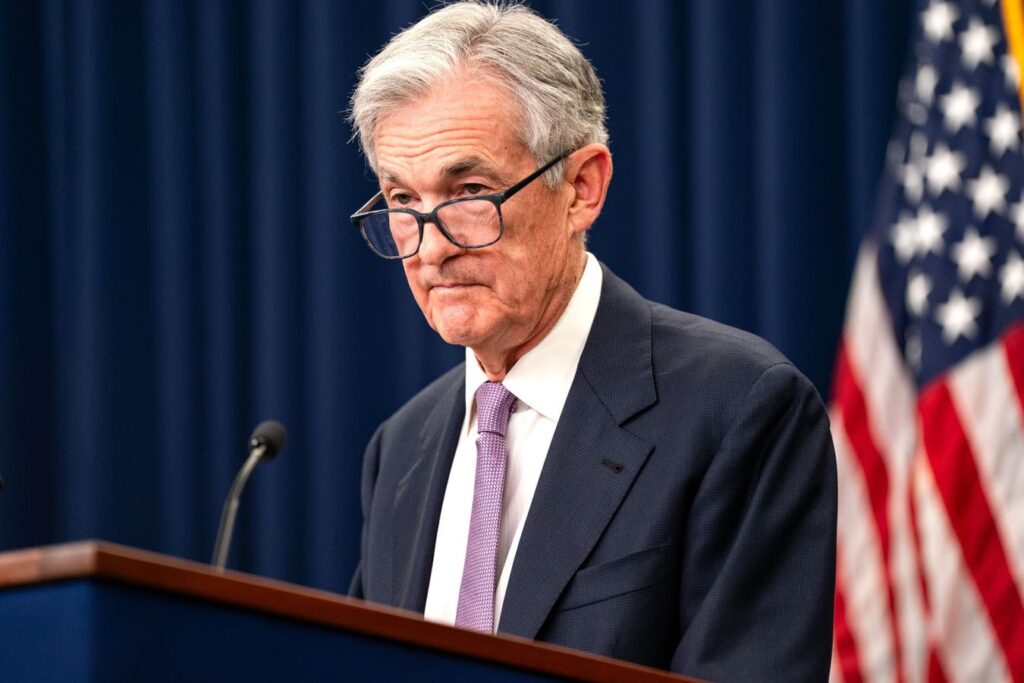The Federal Reserve has now cut interest rates twice this year, lowering the Fed Funds Rate another quarter point this week. However, if you’ve been looking to buy a home, you’ve likely noticed that mortgage rates have not been dropping. Rather, they’ve been doing the opposite.
Increases to the federal funds rate throughout 2022 and 2023 were part of the reason mortgage rates increased from around 3.00% for a 30-year, fixed-rate mortgage at the end of 2021 to 7.79% for the same loan type in the week ending on October 26, 2023. Fed rate increases were also why credit card interest rates jumped, as well as interest rates tied to auto loans, student loans, and other types of borrowing.
So, why aren’t all interest rates dropping since the Fed cut rates? Consumers have been wondering this especially when it comes to mortgage rates, which aren’t dropping the way many consumers thought they would.
For example, mortgage data from Freddie Mac shows the average rate for a 30-year, fixed rate mortgage came in at 7.22% in the week ending on May 2, 2023, then dropped to 6.08% in the week ending on September 26, 2024 (right after the Fed cut rates). From there, the average rate for a 30-year mortgage increased to 6.79% in the week ending on November 7, 2024.
Why Mortgage Rates Haven’t Dropped
According to Shawn DuBravac of the Avrio Institute, mortgage rates are influenced by a wide range of factors beyond movements of the federal funds rate. Mortgage rates are particularly sensitive to the yields on longer-term bonds, especially the 10-year Treasury note. At the same time, 10-year Treasury yields are influenced by Federal Reserve policy and various other factors like inflation expectations, global interest rate differentials, investor sentiment, and overall supply and demand dynamics.
DuBravac adds that the 10-year Treasury yield has been on the rise lately, and this has helped build upward pressure on mortgage rates. Reasons for this could be increased investor concerns about the introduction of additional monetary stimulus into the economy, plus potential fiscal policy excesses from the incoming administration.
Another key element influencing mortgage rates is the risk premium, or the extra yield investors demand to hold mortgage-backed securities (MBS) compared to U.S. Treasuries. DuBravac says this premium has recently widened.
“This is perhaps the single most overlooked factor when explaining why mortgage rates are currently high,” he says.
Darren Tooley, who serves as a senior loan officer at Cornerstone Financial Services in Southfield, Michigan, says that the October Bureau of Labor Statistics (BLS) Jobs Report also played a role in today’s average mortgage rates. This report showed that 254,000 jobs were created in September, which is almost double the forecasted number. These strong employment numbers may have shifted the market’s expectations, thus impacting mortgage rates in their own way.
What Will It Take for Mortgage Rates To Drop?
If you’re waiting for mortgage rates to drop so you can purchase a home or refinance the loan on a property you already own, you may be in limbo for a long time. After all, it took 11 Fed rate cuts over a two-year period to get mortgage rates from record lows to where they are today, so it would take a lot to make a significant impact.
Jaye Hohman of Hohman Finance says that numerous factors could still help push mortgage rates down from where they are right now, including poor data about the economy like bad employment numbers or a slowdown in GDP growth. Other economic factors like an increase in credit card delinquencies or auto loan defaults could also lower rates.
Chris Heller of Movoto Real Estate adds that lower inflation numbers could lead to lower mortgage rates, mostly because investors are more willing to accept lower yields. Economic stabilization is another key factor. If the economy moves toward sustainable growth without inflationary pressure, we’d see rates ease, he said.
Heller also points out that actions from the Federal Reserve that aim to improve long-term economic health could contribute to a downtrend in rates, especially if those efforts lead to lower inflation.
“Mortgage rates are likely to decrease as confidence in the economy rises and inflation concerns subside,” he says.
Should You Wait To Purchase A Home Or Refinance?
These explanations may help you understand more about what’s going on with today’s mortgage rates, but they won’t make your decision easier if you’ve been waiting to buy or refinance. We all know that even a small drop in rates can make monthly mortgage payments considerably more affordable, and that the savings can be even more substantial for larger loan amounts. Of course, the opposite is also true.
Heller also says it’s important to take the long view when it comes to mortgage rates, even though today’s rates are higher than we saw in 2020 and 2021. If you look back at historic mortgage rates from the last few decades, for example, you’ll find that average rates for a 30-year home loan climbed as high as 18% in the early 1980s before dropping closer to the 7% to 10% range throughout the remainder of the 80s, 90s and early 2000s.
You also have to remember that the mortgage you have now doesn’t have to be forever. Tooley says it’s always a good time to get a mortgage because you can always refinance over time (and even multiple times) as market conditions change.
He adds that waiting for mortgage rates to drop before you buy a home can also cost you on the purchase end of the equation, mostly due to increased competition for homes when rates finally fall. So, even if you lock in a lower mortgage rate, you could wind up paying a higher sales price for the home you want.
You could also wait for mortgage rates to drop and see home prices increase even more. What would you do then? At the end of the day, most experts agree to buy a home when you’re ready and can afford the required payment — not when mortgage rates hit some arbitrary number.
Read the full article here











